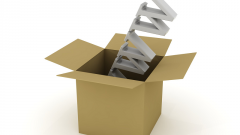You will need
- Opera Browser.
Instruction
1
After you start the browser, open its menu, and under "Page", locate the section "development Tools". Select "Cache", and Opera will load the page with the header "cache Contents". If you have installed any of the earlier versions of the browser and in the menu there is no such item, enter in the address bar opera:cache and press Enter - the result will be the same.
2
The downloads page contains a table listing the domain names whose files are saved in the cache. In the column titled "Cached links" shows the number of saved pages of each domain. In the columns on the "Preview" and "Show" each line placed to the detailed view of the contents of the cache for each domain separately. Links to "Preview all" and "Show all" above the table to view the full content of the repository without separating files belonging to a specific domain.
3
In the beginning of this page there is a set of checkboxes in four columns. Exposing them in tags, you can filter lists the contents of the cache for file types. However, the types here are not the usual file name extensions, and are passed in the http request headers codes - for example, image/gif, video/flv, audio/midi, etc. Set the mark in the checkboxes in the left column, if you want to see in the list only image files. To display only videos, use the checkboxes in the second column. In the third column codes placed sound files. The right column is responsible for displaying text files, pages, scripts, descriptions, styles, etc.
4
If you want to view the contents of Opera's cache without using the browser, find the address of the host this repository on the page "About". To download, open menu and select item with the same name in the "help" section. The full path to the desired folder placed opposite the caption "cash" in the section "Paths" to this page - copy and paste that into the address bar of the file Manager and press Enter.

